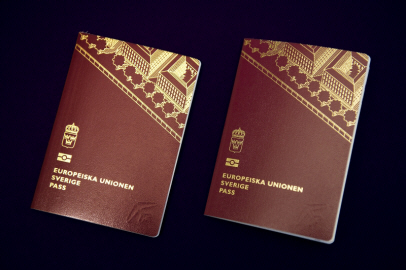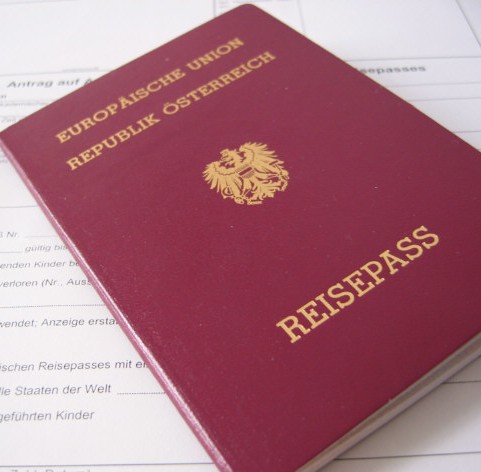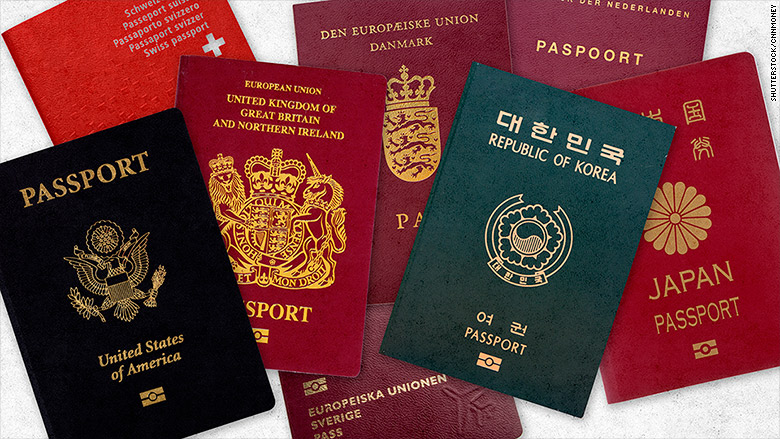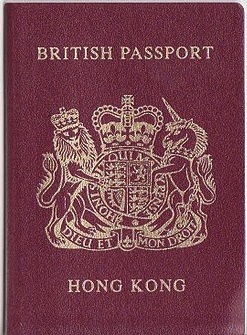Introduction
While Singapore was still a British colony, Malaya (now Peninsular Malaysia) was already an independent nation. So, when Tunku Abdul Rahman, the Malaysian prime minister proposed a merger between Malaya, North Borneo (now Sabah), Sarawak, Brunei and Singapore, the Singaporean prime minister, Lee Kuan Yew, who was also the president of the People's Action Party (PAP) at that time happily welcomed the idea.
While Singapore was still a British colony, Malaya (now Peninsular Malaysia) was already an independent nation. So, when Tunku Abdul Rahman, the Malaysian prime minister proposed a merger between Malaya, North Borneo (now Sabah), Sarawak, Brunei and Singapore, the Singaporean prime minister, Lee Kuan Yew, who was also the president of the People's Action Party (PAP) at that time happily welcomed the idea.
Why was Lee Kuan Yew so open to idea of Malaysia? There are a few theories. It is said this was his attempt to save Singapore from leftist political parties in the island state. The Singaporean Socialist Front, Labour Front and Singapore People's Party were against the merger as they viewed it as the British's attempt to remain in power. The leftists had already won elections in Hong Lin and Anson constituencies in Singapore, making the PAP more vulnerable. A merger would save Singapore from the leftists and the PAP from losing power.
Before Merger
Some historians go as far as to suggest that it was Lee Kuan Yew who allegedly first proposed a merger between Singapore and the rest of Malaya, not the Tunku or the British. Fearing left wing politicians in Singapore growing in power and influence after the elections in Hong Lin and Anson, Lee wrote a paper on the formation of a new federation on May 9, 1961. In the paper, he wrote ":..a plan to create a federation of these three territories must be tactfully and gradually introduced into the minds of the people of the three territories, and should be presented as a desire of the people living in the region, and not initiated by the British. In fact, Sabah and Sarawak's inclusion in Malaysia was to compensate by the Malay and other native numbers in these two states against the Chinese population across both sides of the causeway which was as large as the Malay population.
Meanwhile in Malaya, Prime Minister Tunku Abdul Rahman was not very keen in merging with the Chinse-dominated Singapore. This would increase the number of Chinese citizens in the country, hurting Malay political dominance in Malaya which is what the Tunku's party relies on to stay in power. Malaya, with its strong anti-communist stand has managed to contain Communist influence during the Malayan Emergency unlike Singapore with its substantial Communist influence. Singapore's strong leaning towards left wing politics, encouraging the British to ensure Malaysia absorbs Singapore to drown the Communists' power.
Lee Kuan Yew knew something had to be done and sacked left-leaning PAP members who were not loyal to his leadership. Most of them joined the opposition Socialist Front, which both the British and Lee linked to Communism. Fearing the opposition's growing influence, Lee had to do something before the September 1963 elections. So, one year earlier, he put forth the referendum for Singapore's merger into the Federation of Malaysia. Right before the elections, the British carried out Operation Coldstone where all left-wing politicians including Communists were arrested. With the success of the Operation, PAP won the 1963 elections.
In Malaya, Tunku Abdul Rahman still feared that a Communist Singapore would eventually serve as a haven for Communist militants, paving a way for the ideology to spread to Malaya as well. As a compromise, he proposed that a new federation be formed by merging Malaya and Singapore with the British's three Borneo territories to form Malaysia. The main political leaders of these three territories were A.M. Azahari of Brunei, Donald Stephens of North Borneo (modern day Sabah) and Ong Kee Hui of Sarawak were all against Malaysia. In fact, it is an ope secret in Sabah that Lee Kuan Yew promised Donald Stephens the position of Deputy Prime Minister when Lee was Prime Minister of Malaysia one day, making it possible for Stephens to become Prime Minister one day. Sarawak too eventually agreed to join Malaysia as the way to independence since its Anti-Cession Movement failed. Brunei rejected the merger after the Brunei Revolt.
Three days after the Singapore Referendum, Lee announced on radio that Singaporeans clearly wanted to join Malaysia. Together with Sabah and Sarawak,Lee declared their de facto independence from the British on August 31 alongside Malaya's Independence Day against the Tunku's desire. Later that year, Malaya, Singapore, Sabah and Sarawak merged to form Malaysia.
After Merger
Once Malaysia was formed, the new country had two Prime Ministers, Tunku as Prime Minister of the whole of Malaysia at the federal level and Lee Prime Minister of Singapore but with the same status as the Chief Minister of other states in the Federation. With Singapore as a member of the Malaysian Federation, it had shared powers with the federal government. Defense, foreign relations and internal security were under the federal government. Education and labour were under the state government. Meanwhile, economy, industry and manufacturing would be shared responsibilities.
Despite Lee's attempts, the PAP won only one of the nine seats it was contesting with a majority of a mere 808 votes in Malaysia's biggest constituency while MCA won 27 seats, 9 more than it did in the 1959 elections. With both sides playing the race card for votes, communal riots broke out in Singapore on July 21, 1964. Eventually, a two-year Alliance-PAP truce was made where the PAP would stop raising sensitive Malay issues in public.
Before Merger
Some historians go as far as to suggest that it was Lee Kuan Yew who allegedly first proposed a merger between Singapore and the rest of Malaya, not the Tunku or the British. Fearing left wing politicians in Singapore growing in power and influence after the elections in Hong Lin and Anson, Lee wrote a paper on the formation of a new federation on May 9, 1961. In the paper, he wrote ":..a plan to create a federation of these three territories must be tactfully and gradually introduced into the minds of the people of the three territories, and should be presented as a desire of the people living in the region, and not initiated by the British. In fact, Sabah and Sarawak's inclusion in Malaysia was to compensate by the Malay and other native numbers in these two states against the Chinese population across both sides of the causeway which was as large as the Malay population.
Lee Kuan Yew knew something had to be done and sacked left-leaning PAP members who were not loyal to his leadership. Most of them joined the opposition Socialist Front, which both the British and Lee linked to Communism. Fearing the opposition's growing influence, Lee had to do something before the September 1963 elections. So, one year earlier, he put forth the referendum for Singapore's merger into the Federation of Malaysia. Right before the elections, the British carried out Operation Coldstone where all left-wing politicians including Communists were arrested. With the success of the Operation, PAP won the 1963 elections.
In Malaya, Tunku Abdul Rahman still feared that a Communist Singapore would eventually serve as a haven for Communist militants, paving a way for the ideology to spread to Malaya as well. As a compromise, he proposed that a new federation be formed by merging Malaya and Singapore with the British's three Borneo territories to form Malaysia. The main political leaders of these three territories were A.M. Azahari of Brunei, Donald Stephens of North Borneo (modern day Sabah) and Ong Kee Hui of Sarawak were all against Malaysia. In fact, it is an ope secret in Sabah that Lee Kuan Yew promised Donald Stephens the position of Deputy Prime Minister when Lee was Prime Minister of Malaysia one day, making it possible for Stephens to become Prime Minister one day. Sarawak too eventually agreed to join Malaysia as the way to independence since its Anti-Cession Movement failed. Brunei rejected the merger after the Brunei Revolt.
Three days after the Singapore Referendum, Lee announced on radio that Singaporeans clearly wanted to join Malaysia. Together with Sabah and Sarawak,Lee declared their de facto independence from the British on August 31 alongside Malaya's Independence Day against the Tunku's desire. Later that year, Malaya, Singapore, Sabah and Sarawak merged to form Malaysia.
After Merger
Once Malaysia was formed, the new country had two Prime Ministers, Tunku as Prime Minister of the whole of Malaysia at the federal level and Lee Prime Minister of Singapore but with the same status as the Chief Minister of other states in the Federation. With Singapore as a member of the Malaysian Federation, it had shared powers with the federal government. Defense, foreign relations and internal security were under the federal government. Education and labour were under the state government. Meanwhile, economy, industry and manufacturing would be shared responsibilities.
However, two years after the merger, several problems arose. For one, Singapore's state government was not happy with the federal government competing with its position as an international industrial and trade center and wished to remain a free port. Also, the predominantly Chinese, Singapore-based PAP was gearing up to compete with the ruling United Malay National Organization (UMNO) at the federal level. Lee quickly tried to replace the Malaysian Chinese Association (MCA) as the representative party of the Chinese, calling MCA the "Money Collecting Association" and UMNO's submissive.
Despite Lee's attempts, the PAP won only one of the nine seats it was contesting with a majority of a mere 808 votes in Malaysia's biggest constituency while MCA won 27 seats, 9 more than it did in the 1959 elections. With both sides playing the race card for votes, communal riots broke out in Singapore on July 21, 1964. Eventually, a two-year Alliance-PAP truce was made where the PAP would stop raising sensitive Malay issues in public.
While UMNO was already part of a strong coalition called the Alliance Party alongside the Malaysian Chinese Association (MCA) and the Malaysian Indian Congress (MIC), PAP knew it had to garner support from the politically strong Malay heartland. Therefore, it worked together with multiracial parties in Peninsular Malaysia such as People's Progressive Party (PPP) and the United Democratic Party (now GERAKAN) to form the Malaysian Solidarity Convention, which opposed affirmative action for Malays.
Racial polarization increased in Malaysia with ultras on both sides of the political spectrum. In the end, it was Tan Siew Sin, the president of MCA and Tan Tong Hye, the secretary-general of the Alliance Party who suggested to the Tunku that Singapore be separated from the Federation. With Singapore's exit, Stephens, now Chief Minister of Sabah wanted to review his state's participation in the Federation. He was swiftly sent away to Australia as High Commissioner, before returning to serve as Governor years later.
Conclusion
As we can see, there was a similar trend in the events before and after the merger. When the PAP was the ruling party, it did all in its power to eliminate any political threats, going as far as merging with a larger country to stay in power. However, once it became the opposition, the only state where it stayed in power was unceremoniously expelled so that the ruling party can stay in power. Funny how things work out, particularly in politics.
Conclusion
As we can see, there was a similar trend in the events before and after the merger. When the PAP was the ruling party, it did all in its power to eliminate any political threats, going as far as merging with a larger country to stay in power. However, once it became the opposition, the only state where it stayed in power was unceremoniously expelled so that the ruling party can stay in power. Funny how things work out, particularly in politics.











